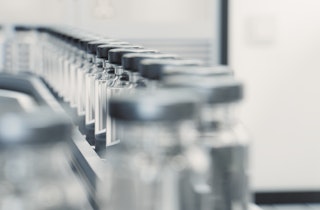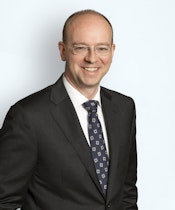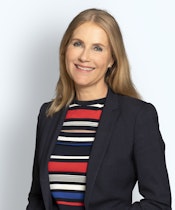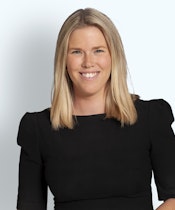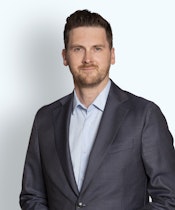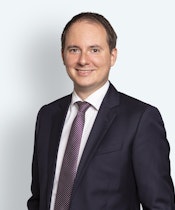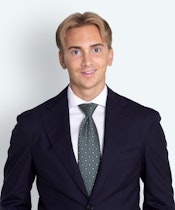A manufacturer planning to market a medicinal product in Norway must both apply for a marketing authorization and establish a maximum price, as well as comply with statutory requirements.
Below is an overview of several of the requirements that apply to the marketing of medicinal products for humans (human medicines).
Marketing authorisation
The control of medicinal products to ensure quality, safety, and efficacy is essential for protecting the public health. This is why medicinal products must be approved by regulatory authorities before they can be marketed in Norway. If the medicinal product is approved, the manufacturer receives a marketing authorisation (MA).
The requirements that medicinal products must meet to obtain marketing authorization, as well as the rules governing the approval process, are largely harmonized within the EEA area. This regulatory framework allows for approval through one of four alternative procedures: the national procedure (NP) and three cross-border collaborative procedures: the centralized procedure (CP), the decentralized procedure (DCP), and the mutual recognition procedure (MRP). A common feature of all these procedures is that the manufacturer must document the medicinal product's quality, safety, and efficacy in the application, and it will only be approved for sale if the benefits outweigh the risks associated with its use.
A marketing authorisation is typically issued for a five-year period. At the end of this period, the holder of the marketing authorisation can apply for renewal. If the authorisation is renewed, the general rule is that it is granted unlimited validity. To maintain the authorisation, the medicinal product must actually be marketed. If the medicinal product is not marketed within a period of three years after the authorisation is issued, or if marketing ceases for a period of three years, the authorisation will lapse.
A manufacturer granted marketing authorisation and exercising its right to market must comply with certain statutory obligations. Firstly, there is an obligation to monitor the use of the medicinal product to detect new side effects. Secondly, the manufacturer must stay informed about developments in the medicinal product field and make necessary changes to the documentation underlying the marketing authorization if warranted. The holder of the marketing authorization is also required to notify the Norwegian Medicines Agency (NOMA) of any new information that may alter the documents submitted with the marketing authorization application, any prohibitions or restrictions imposed in other countries, and any other information that may affect the assessment of the benefit-risk balance. Additionally, NOMA must be informed of the commencement and discontinuation of the marketing of the medicinal product.
More on the various procedures
Under the national procedure, the manufacturer submits an application for approval to the Norwegian Medical Products Agency (NOMA), which approves the medicinal product at a national level. In other words, the medicinal product is only approved for marketing in Norway.
In contrast, the centralized procedure allows for the medicinal product to be approved for sale in all EU and EEA countries. In this case, the manufacturer submits the application directly to the European Medicines Agency (EMA), which designates two EU/EEA countries to evaluate the application. This evaluation is then reviewed by the EMA's Committee for Medicinal Products for Human Use (CHMP), which makes a recommendation based on a benefit-risk assessment of the medicinal product. This recommendation is forwarded to the European Commission, which makes the final decision. The Commission will generally approve the medicinal product if the CHMP's recommendation is positive, and the marketing authorization will be valid in all EU member states. As an EEA member, Norway is required to issue a national marketing authorization within 30 days after the Commission has approved the application.
In the decentralised procedure, the medicinal product can be approved for sale in two or more countries. Under this procedure, the manufacturer submits an application for approval to the regulatory authorities in each of the countries where the medicinal product is intended to be marketed. The authorities of one of the application countries then conducts an assessment on behalf of all the countries, after which all application countries make final decisions based on a benefit-risk evaluation.
Similarly, through the mutual recognition procedure, the medicinal product can be approved in two or more countries. This procedure is applicable if the manufacturer already has a national marketing authorisation in an EU or EEA country. The manufacturer must first renew its national marketing authorisation and then submit an application to the other countries where the medicinal product is intended to be marketed, along with an evaluation from the authority that renewed the marketing authorisation. This serves as the basis for issuing marketing authorisations in the application countries.
For more information on the requirements for the approval of medicinal products and the various application procedures, please refer to the relevant guidelines here.
Maximum price
As many medicinal products are patent-protected, competition in the medicinal product market is limited. In Norway, a significant portion of patients' expenses for medicinal products is covered by the National Insurance Scheme (Folketrygden), which means that patients often place less emphasis on price when selecting a medication. This market situation can lead to high prices for medicinal products. To prevent patients and the National Insurance Scheme from incurring unreasonable costs, prescription medicinal products for humans are subject to price regulation.
Price regulation entails that a maximum price must be established for human prescription medicinal products to be marketed. The maximum price is the highest price at which the specific medicinal product can be sold. To have a maximum price set, the holder of the marketing authorisation must submit an application to the Norwegian Medical Products Agency (NOMA). The NOMA determines both the maximum pharmacy purchase price (PPP) and the maximum pharmacy retail price (PRP).
In setting the PPP, the NOMA considers the market price of the medicinal product in other EEA countries. In practice, the price is set as an average of the three lowest market prices in the reference countries: Belgium, Denmark, Finland, Ireland, the Netherlands, the United Kingdom, Sweden, Germany, and Austria. After the maximum price is established, the NOMA may decide on price adjustments if circumstances change or new information suggests that the price should be different. Relevant circumstances may include significant changes in exchange rates or changes in the European prices that form the basis for calculating the maximum price. However, such adjustments can only occur once a year. For new products, price adjustments can occur every six months during the first two years after the product is launched.
The requirement for establishing a maximum price applies only to registered, prescription medicinal products for humans. Medicinal products that do not have marketing authorisation, over-the-counter medicinal products, and veterinary medicinal products are not subject to any price regulation. Furthermore, this form of price regulation is mainly relevant to the extent that the medicinal product is an original product that holds a dominant position in the market. When a medicinal product's patent expires, generic or biosimilar competition may arise from medicinal products containing the same active ingredient. If such equivalent medicinal products are included on the NOMA's list of interchangeable medicinal products (the substitution list), a step price is established according to the so-called stepped-price. The step price is significantly lower than the maximum price and means that pharmacies within each substitution group (active ingredient type) must offer at least one product at the step price. Learn more about the substitution list and the stepped-price system here.
For more information on the establishment of maximum prices, visit NOMA's website.
Requirements for other parties in the supply chain
To ensure the quality, safety, and efficacy of medicinal products approved for marketing, there are also requirements for other parties in the supply chain handling medicinal products. Manufacturers, importers, and wholesalers must be aware that such activities also require authorisation from the regulatory authorities, and there are specific requirements for the operation of such businesses.
Veterinary medicinal products
The marketing of veterinary medicinal products is subject to many of the same requirements as those for human medicinal products. Approval of veterinary medicinal products can occur through four different procedures: the national procedure (NP) and the cross-border collaborative procedures, namely the centralised procedure (CP), decentralised procedure (DCP), and mutual recognition procedure (MRP). Unlike human medicinal products, veterinary medicinal products are not subject to price regulation in Norway.

Spotlight
Life Science – the framework for future health innovation
The life sciences industry is a critical driver of health innovation, balancing the challenges of research, development, and regulation. With significant investments and focus on enhancing treatment efficacy, the industry is shaping the future of healthcare. As new technologies and regulatory frameworks evolve, staying ahead of these trends is essential for navigating the opportunities and risks that will define tomorrow's breakthroughs.
Read more